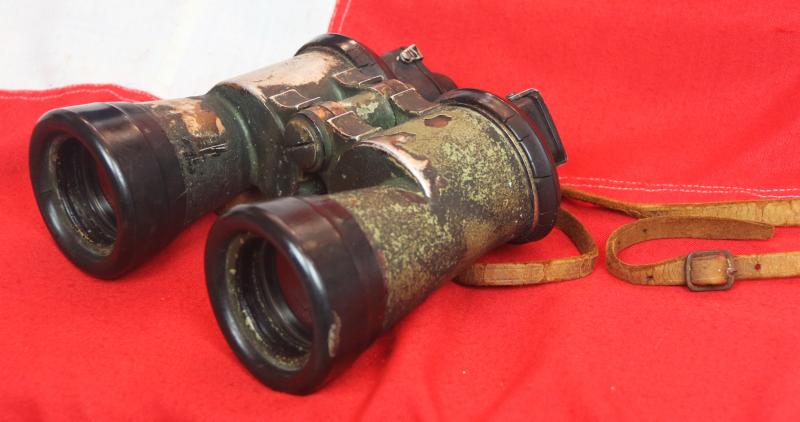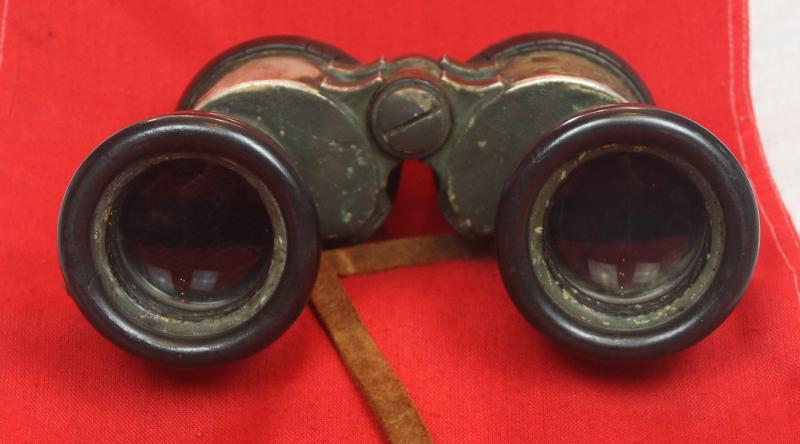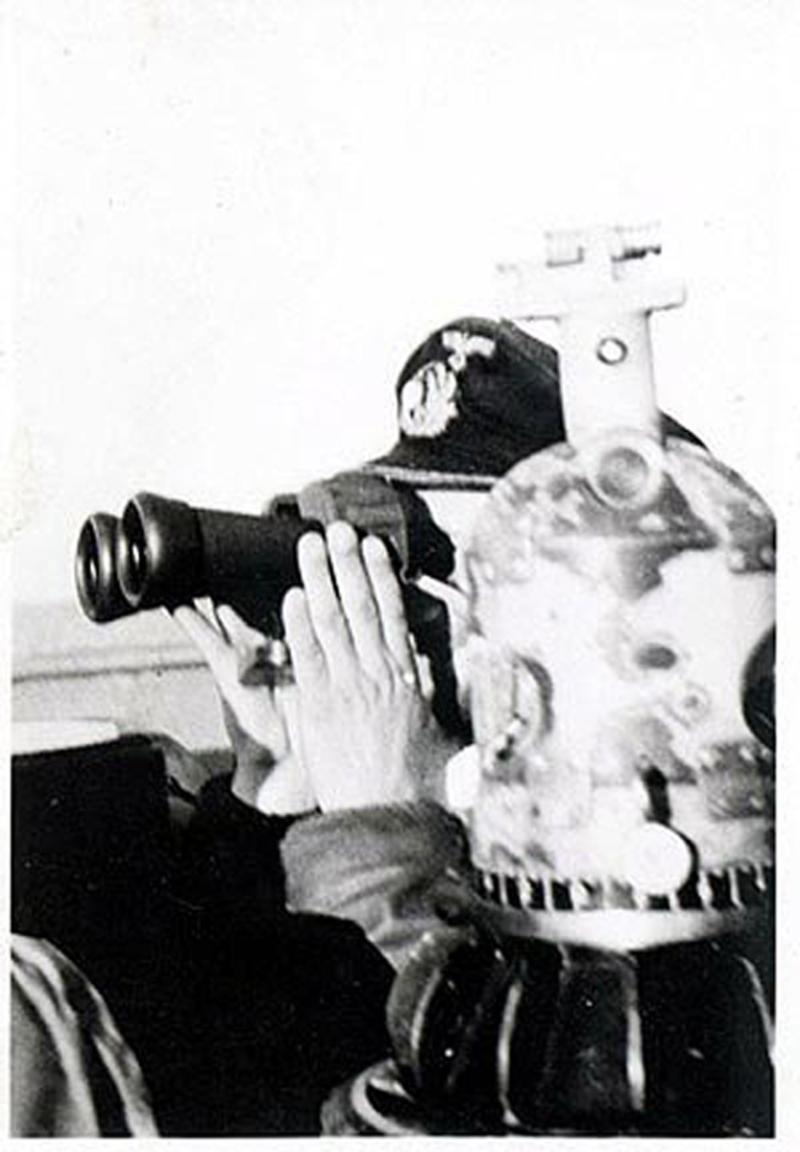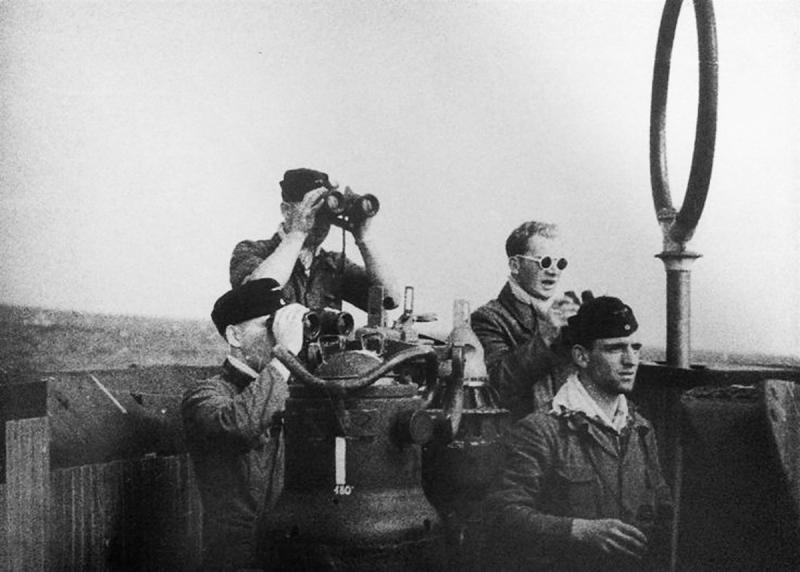A Superb Pair of WW2 German Kriegsmarine "U-boat" Fixed-Focus Binoculars. “Doppelfernrohr 7 X 50 für U-Boote ‘U-Bootglas 7X50’”
These are an original pair of German, WW2 U-Boat commanders binoculars, and for desirability simply cannot be bettered. This delightful pair are in fabulous condition, with all the rubbers and lenses in lovely condition for age, with all the usual wear as to be expected.
Third Reich WW2 period code marked. With superb fixed focusing, excellent optics and lenses, just a very little condensation misting.
Winston Churchill claimed that the 'U-boat peril' was the only thing that ever really frightened him during WWII. This was when German submarines attacked the Atlantic lifeline to try to starve Britain into submission.
In WWII the British troop ship, RMS Laconia, was sunk by a German U-boat. The U-boat captain Werner Hartenstein immediately ordered the rescue of as many survivors as possible, taking 200 people on board, with another 200 in lifeboats. Although, it is fair to say that not all U-boat commanders were quite so considerate as he was. The U-Boat 7 X 50 binocular was manufactured from 1941 – 1945 specifically for use aboard submarines and was officially designated as the “Doppelfernrohr 7 X 50 für U-Boote ‘U-Bootglas 7X50’”. They were usually made by Zeiss but a smaller number were also manufactured by Emil Busch Rathenow (wartime code “cxn”).
It had three variations. The first was made from 1941-1943, lacked rubber armour and had hinged fold-back Bakelite eyecups. The second was made probably only in 1943 and had rubber armour without fold-back eyecups. The third was made from 1943-1945 and is identical to the second except for having a larger diameter eyelens. The first type is the rarest many being lost during service use.
The build of this binocular is remarkable and unequaled by WWII hand-held binoculars, and some believe never bettered since the war either. It is a fixed focus design for maximum sealing and weatherproofing. The primary user of the binocular could, however, set the focus to his eyesight by removing the rubber armour from the prism plates to access a large focus screw at the base of each eyepiece which could be adjusted using a screwdriver.
During World War II, U-boat warfare was the major component of the Battle of the Atlantic, which lasted the duration of the war. Germany had the largest submarine fleet in World War II, since the Treaty of Versailles had limited the surface navy of Germany to six battleships (of less than 10,000 tons each), six cruisers, and 12 destroyers.
In the early stages of the war the U-boats were extremely effective in destroying Allied shipping; initially in the mid-Atlantic where a large gap in air cover existed until 1942, when the tides changed. The trade in war supplies and food across the Atlantic was extensive, which was critical for Britain's survival. This continuous action became known as the Battle of the Atlantic, as the British developed technical defences such as ASDIC and radar, and the German U-boats responded by hunting in what were called "wolfpacks" where multiple submarines would stay close together, making it easier for them to sink a specific target. Later, when the United States entered the war, the U-boats ranged from the Atlantic coast of the United States and Canada to the Gulf of Mexico, and from the Arctic to the west and southern African coasts and even as far east as Penang. The U.S. military engaged in various tactics against German incursions in the Americas; these included military surveillance of foreign nations in Latin America, particularly in the Caribbean, to deter any local governments from supplying German U-boats.
Because speed and range were severely limited underwater while running on battery power, U-boats were required to spend most of their time surfaced running on diesel engines, diving only when attacked or for rare daytime torpedo strikes. The more ship-like hull design reflects the fact that these were primarily surface vessels that could submerge when necessary. This contrasts with the cylindrical profile of modern nuclear submarines, which are more hydrodynamic underwater (where they spend the majority of their time), but less stable on the surface. While U-boats were faster on the surface than submerged, the opposite is generally true of modern submarines. The most common U-boat attack during the early years of the war was conducted on the surface and at night. This period, before the Allied forces developed truly effective antisubmarine warfare tactics, which included convoys, was referred to by German submariners as "die glückliche Zeit" or "the happy time."
The neck strap has separated, the rubber armour has overall age cracking as usual, the original eye protectors have has replacement post war retaining screws. Plus usual paint loss. Bear in mind they were subjected to some years at sea, over 80 years ago, as combat service surveillance equipment, above and below deck, in some of the most unpleasant weather one can experience, yet still survive till today as fully functioning binoculars as was originally intended eight decades ago. No doubt in some part due to their original owner’s skill or good fortune {the U-Boat commander}, at avoiding being sunk by the indomitable Royal Navy ships or RAF spotter planes.
Code: 25298
2450.00 GBP










